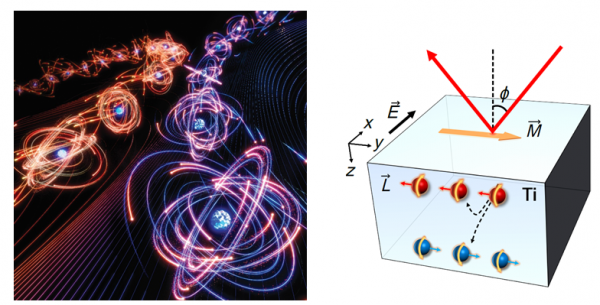[Prof. Hyun-Woo Lee] Observation of the orbital Hall effect in a light…
- No attach File
관련링크
main text
Caption: (Left) Orbital Hall effect. (Right) Schematic illustration of the experimental observation of orbital Hall effect in Ti.
[Prof. Hyun-Woo Lee] Observation of the orbital Hall effect in a light metal Ti
The orbital Hall effect refers to the generation of electron orbital angular momentum flow transverse to an external electric field. Contrary to the common belief that the orbital angular momentum is quenched in solids, theoretical studies predict that the orbital Hall effect can be strong and is a fundamental origin of the spin Hall effect in many transition metals. Despite the growing circumstantial evidence its direct detection remains elusive. Here we report the magneto-optical observation of the orbital Hall effect in the light metal titanium (Ti). The Kerr rotation by the orbital magnetic moment accumulated at Ti surfaces owing to the orbital Hall current is measured, and the result agrees with theoretical calculations semi-quantitatively and is supported by the orbital torque measurement in Ti-based magnetic heterostructures. This result confirms the orbital Hall effect and indicates that the orbital angular momentum is an important dynamic degree of freedom in solids. Moreover, this calls for renewed studies of the orbital effect on other degrees of freedom such as spin, valley, phonon and magnon dynamics.



-2.gif)









 Login
Login


